From Retail to Runway: 12 Sustainable Fashion Labels to Watch


Worth an estimated $2.5 trillion, the global fashion industry is under increasing pressure to limit its negative impacts on people and the planet. Media reports continue to decry the labor and environmental costs of fast fashion and describe the startling impact of our addiction to online shopping and free returns.
As consumer preferences shift, ethical supply chains and a push against overconsumption are finally having a moment in mainstream fashion. The Council of Fashion Designers of America (CFDA) released a sustainability report in January, which includes recommendations for sustainable manufacturing and calls-to-action for companies in the industry. Sustainability also emerged as an ongoing trend at New York Fashion Week, with Chromat and Collina Strada theming their entire collections around climate change and sustainable materials on display from the likes of Livari and Nicole Miller.
As top designers continue to debut their collections in New York, we’re tipping our hats to some of the leading players in the sustainable fashion space—from retail to runway.
1. Mara Hoffman
American designer Mara Hoffman advocates responsible consumption with her eponymous fashion line. She uses responsibly-sourced organic, recycled and regenerated materials to create minimal womenswear that's built to last. The company also utilizes fair labor and participates in sector-wide partnerships such as the Sustainable Apparel Coalition, the Organic Cotton Accelerator and the Cradle to Cradle Products Innovation Institute’s Fashion Positive initiative.
The company didn't always operate with such a laser focus on sustainability. After a decade of success in mainstream fashion, Hoffman began to shift her practices about five years ago upon realizing the impact of her industry. "We’ve been making things too rapidly, and there’s too much of it," she told Vogue. "There’s this daunting feeling that you can’t change [an industry] that’s been in motion for so long, but I couldn’t keep showing up if we weren’t going to make some changes.”
Hoffman was honored for her efforts at an event during New York Fashion Week on Monday, receiving a Champions of Sustainability award from textile solutions provider Unifi for her commitment to conscious fashion. A major player in its own right, Unifi has turned more than 14 billion plastic bottles into its signature REPREVE fabric. Hoffman uses the fabric in her swimwear collection, while larger brands like Nike, Target and Polartec have each utilized over a billion bottles in their products, according to Unifi.
2. Reformation
While most sustainable labels seek to disrupt the “fast fashion” model, millennial favorite Reformation takes the opposite approach. Its online and retail stores feature new items every few weeks, but the label trades throwaway threads for durable statement pieces made from sustainable materials, such as vintage and deadstock fabrics. The company operates its own factory in downtown Los Angeles, where workers are paid fair wages.
The company's relaxed designs, sustainability focus and responsible manufacturing have proven a hit with fashion A-listers and everyday shoppers alike. Supermodel Karlie Kloss invested in the company back in 2015, and the label counts celebrities like Rihanna and Emily Ratajkowski as fans.
3. Stella McCartney
You could say that designer Stella McCartney was ahead of her time when she founded her namesake fashion label in the 1990s with sustainability front and center. In the years since, McCartney and her company have crafted an ethical supply chain based around sustainable and vegan textiles. More recently, the brand has moved to the next level to embrace a circular economy, in which materials are infinitely cycled or returned to the earth as compost and nothing becomes waste.
The company worked with the Ellen MacArthur Foundation on a 2017 report that identified a $500 billion opportunity in circular fashion. The brand is also a founding member of the Cradle to Cradle Products Innovation Institute’s Fashion Positive initiative and continues to introduce recyclable and biodegradable materials that support circularity in fashion.
4. Lukhanyo Mdingi
From designer representation to model casting, New York Fashion Week has a longstanding diversity problem. But, at long last, the winds are beginning to shift. The spring/summer 2019 presentation, held in September, was by far the most inclusive ever with respect to model casting, according to data analyses, and runway lineups continue to include emerging designers from diverse backgrounds.
One such up-and-comer is South African designer Lukhanyo Mdingi and his unisex fashion line by the same name. Mdingi's high-end collection emphasizes materials that are biodegradable and sourced responsibly from South Africa, reducing impact at all stages of the product life cycle.
5. E.L.V. Denim
This zero-waste brand reclaims vintage denim and transforms it into new, perfectly fitted and even made-to-measure jeans. The line is designed and manufactured in East London, with an eye toward minimizing water and energy footprints, according to the company. “For me it’s just common sense,” Anna Foster, founder of E.L.V. Denim, told Vogue U.K. last year. “There are more pairs of jeans in the world than there are people.”
6. Everlane
Cult e-commerce favorite Everlane was founded on the principal of "radical transparency." The company discloses the true cost of manufacturing and shipping each piece, as well as its markup, and provides detailed information about each of its partner factories online. At the Remode conference in Los Angeles last year, founder and CEO Michael Preysman said the company's sustainability practices—such as fair labor and materials sourcing—increase costs by about 10 to 15 percent per garment, which the company absorbs rather than passing on to the customer.
Though the brand emphasizes competitive pricing, it also encourages responsible consumption and leverages its own buying power to address the global waste problem. It's part of the Next Wave Plastics partnership, which rallies top companies to collect ocean-bound plastic and turn it into new products. Through the partnership, Everlane launched a line of outerwear made from recycled plastic and pledged to eliminate new plastic from its supply chain in 2021. "Plastic is destroying our planet and there is only one solution: Stop creating virgin plastic and renew what's already here," Preysman said in a statement. "Companies have to take the lead and any company that hasn't made this commitment is actively choosing to not improve our environment."
7. Ninety Percent
Launched in 2018, the aptly-named women’s label Ninety Percent shares 90 percent of its distributed profits with charitable causes and the people who design and manufacture its collections. The London-based label sources organic and recycled materials for its contemporary daywear line, which has already received mainstream accolades from the likes of Harper’s Bazaar.
Customers are prompted to join “a consumer movement that empowers makers and wearers” by selecting a cause to benefit from their purchases. "People are starting to wake up when it comes to environmental, consumer and political movements—and not just within the fashion industry," creative director Ben Matthews told Refinery29. "It’s so important that people are becoming more mindful about the world we live in today.”
8. Amour Vert
California-based Amour Vert works directly with mills to pioneer new fabrics that are durable and desirable, as well as sustainable. Its signature textiles include a carbon-neutral beechwood fabric, cotton certified by the Global Organic Textile Standard (GOTS), and Mulberry silk sourced from family-owned operations and colored with nontoxic dyes.
The company works with small garment manufacturers in Northern California, and 97 percent of its clothing is made within a few miles of its San Francisco office—decreasing carbon emissions and supporting fair labor. If that's not enough, Amour Vert also plants a tree in North America for every T-shirt it sells, in partnership with American Forest, and has supported supported 21 reforestation projects to date.
9. Eileen Fisher
“Ten years ago, I decided to take baby steps toward making clothes that helped versus hurt the planet,” designer Eileen Fisher told Inc. magazine back in 2014. “But recently I realized we're not moving fast enough: We have to start sprinting, and actually lead the fashion industry to make these changes now.”
The powerhouse entrepreneur followed through on her pledge with a set of bold 2020 goals for her eponymous fashion label. The company known for its women’s basics made from organic and recycled materials has pledged to become carbon neutral by the end of next year. It’s also striving to create an entirely ethical supply chain with a focus on fair labor and human rights and “use the most sustainable fibers we can lay our hands on,” among other targets.
10. Looptworks
Though you're unlikely to see its designs stomp the runway, this brand's work to repurpose large volumes of unwanted material stands out from the pack. Based in Portland, Oregon, Looptworks partners with top companies and organizations, such as Southwest Airlines, Alaska Airlines and the Portland Trail Blazers basketball team, to turn their unwanted and retired materials into new products. Most recently, the company created a line of accessories from 350,000 pounds of retired Delta Airlines uniforms in what Looptworks called "one of the largest, single-company textile diversion programs in U.S. history."
The uniforms were cleaned and processed by adults with barriers to employment, in partnership with the Portland nonprofit Relay Resources, before being upcycled into accessories like totes and backpacks. A portion of sales from the collection will support environmental education programs through the Captain Planet Foundation.
11. Volcom
Skate, surf and snowboarding brand Volcom has been quietly shifting toward more sustainable practices in recent years, introducing better fiber sourcing and advocating for the natural spaces its customers love. Most recently, Volcom and its parent company, Kering, partnered with the social enterprise CottonConnect to track 27 tons of organic cotton from farm to garment.
The traceability project will form a proof of concept for Farm to Yarn, a socially conscious raw materials initiative that traces organic cotton back to the farm and provides social and education programs for the Indian farming villages where the cotton is sourced. “Partnership has been the key word used to describe the success of this launch,” Big Tony Alvarez, Volcom’s VP of global compliance and supply chain, said in a statement. “Without good partners on the ground, a program like this rarely stands a chance.”
12. Patagonia
It's hard to discuss sustainable apparel without mentioning Patagonia. The outdoor gear favorite and its founder, Yvon Chouinard, have a long history in the space—and their ambitions continue to rise. The company switched to 100 percent organic cotton all the way back in 1996, and recycled wool, down, nylon, and polyester are also featured in its line of gear and apparel. In 2013, Patagonia became one of the first mainstream labels to offer Fair Trade fashions and now boasts more than 300 certified styles in its portfolio.
The company is also a key player in the growing Brands Taking Stands movement. It continues to advocate for the protection of outdoor spaces, standing against the Donald Trump administration's move to shrink the size of Bears Ears National Monument in Utah and joining with REI and other outdoor labels in a lawsuit against the administration to protect public lands.
Images courtesy of Amour Vert
Power Companies Now Sourcing Energy From Female Executives

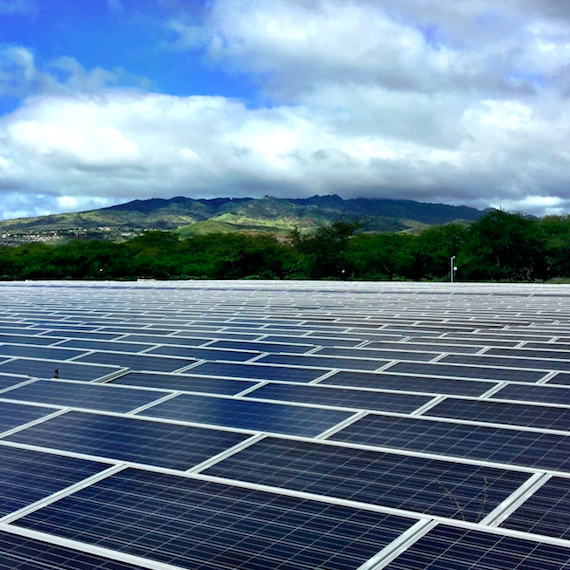
About 25 percent of power generation companies in America are currently led by women, several of whom have transformed these businesses' operations by providing clean power to customers.
Power generation companies have historically been led by male boards and CEOs. But executive leadership across this sector is evolving. The disruption of this once-standard leadership structure can result in several long-term benefits for companies; watch for more utilities and other power companies to cultivate leaders who look more like 21st-century America.
This change is most evident in solar power companies, as about half of their new hires in 2016 were women. Over 25 percent of electric utility companies in America are currently led by women, several of whom have demonstrated their ability to build a competitive advantage by providing clean power to their customers.
We’ll profile a few women executives who demonstrate this industry’s current transformation.
Lynn Good has served as Duke Energy Corporation’s CEO since 2013. She has focused on leading the company into exploring smarter and cleaner energy sources with a ten-year plan announced in 2017. This plan aims to expand the company’s natural gas infrastructure, improve its energy grid and source from cleaner energy supplies. Duke Energy expects the plan will improve its goodwill and increase customer value by fulfilling demands for sustainable energy. By 2030 the company plans to reduce carbon dioxide emissions by 40 percent. Under Ms. Good’s leadership, the company has retained its spot on the Dow Jones Sustainability Index for the past 13 consecutive years.
El Paso Electric Company’s Mary Kipp was recently elected as CEO of the company in 2015. She is the first female CEO to lead the company throughout its 114-year history. Ms. Kipp also has a history as a senior enforcement attorney prosecuting against violations of federal energy laws. Her past foreshadows her future in leading the company to comply with energy laws and develop new sources of renewable energy.
In New Mexico, Pat Vincent-Collawn is leading PNM Resources’ drive to embrace diversity in its workforce. She served as the chairman of Edison Electric Institute until 2018 and introduced the first diversity and inclusion summit that the association has ever hosted. This was long overdue for EEI – the group was conceived in 1933, but this diversity summit was not hosted until 2017. As EEI represents all investor-owned electric companies in the U.S., actions like Ms. Collawn’s attract minorities who may have felt isolated by the conventional white male leadership. Boasting a diverse workforce is a vital strength for organizations looking for fresh mindsets ready to explore alternative sources of energy. Ms. Collawn also served as chairman of the nonprofit Electric Power Research Institute (EPRI), an organization that provides sustainability and carbon emissions research. Her experiences with EEI and EPRI point to a future of cleaner energy at PNM Resources.
Lynn Jurich cofounded Sunrun Inc. and has since led the company as CEO as it became the largest residential solar energy provider in America. Sunrun has an overarching mission of completely powering the planet from energy harvested from the sun. Ms. Jurich developed the company’s power purchase agreement (PPA) business model that provides customers with solar energy from panels owned and maintained by Sunrun. This strategy alleviates the burden of installation and maintenance for customers while allowing them to reap the benefits of endless clean energy. Sunrun recently expanded into seven new states and provided around the clock solar energy to first responders in Puerto Rico.
Look to the Aloha State for another example of how some of these trailblazing utility CEOs have turned to renewables for future growth. Connie Lau, president and CEO of Hawaiian Electric, has been on board with her state’s ambition to run 100 percent on renewables by 2045. “There is a misconception that utilities do not welcome renewable energy. I think that couldn’t be further from the truth,” she said in an interview with General Electric in 2016. “If you look at the statistics for the industry in total, the utilities are some of the companies that are adopting and integrating renewable energy at a record clip.”
The growing number of women leading power companies embodies the gender equality movement of recent years. Women’s attraction to leadership roles in power companies correlate with shifting interests toward developing and deploying more clean energy. This change in leadership is certainly compelling to millennials, who have made it clear they want to work for organizations that make a difference – as it is certainly an appealing idea to work for a clean energy company that can lead to reducing environmental harm. The power of female executives to lead companies toward innovative technology and diversified workforces foreshadows promising futures at once-stodgy power companies.
Image credit: U.S. Department of Energy/Flickr
Will Talk About Curbing Plastic Use Turn into Action?
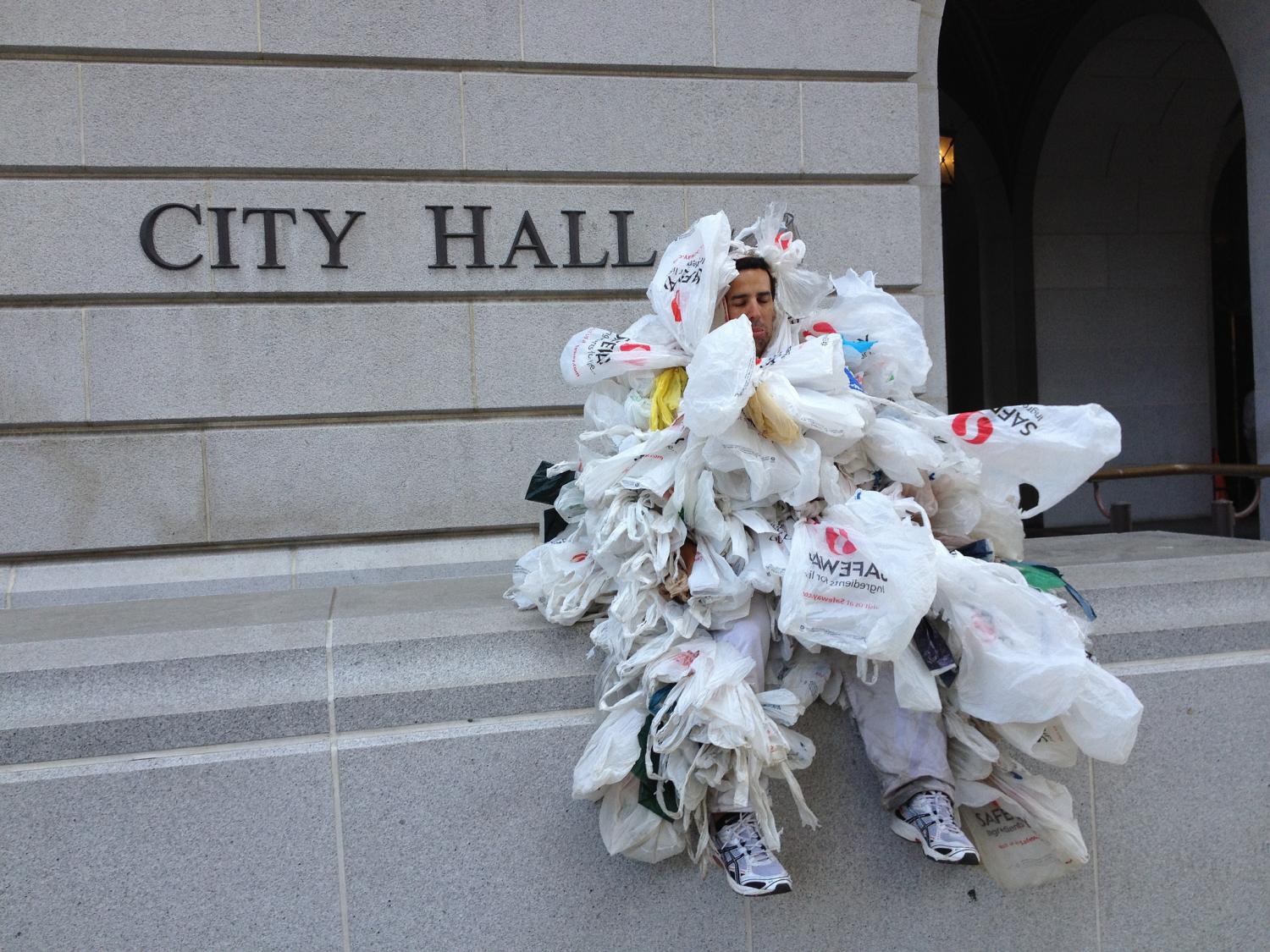
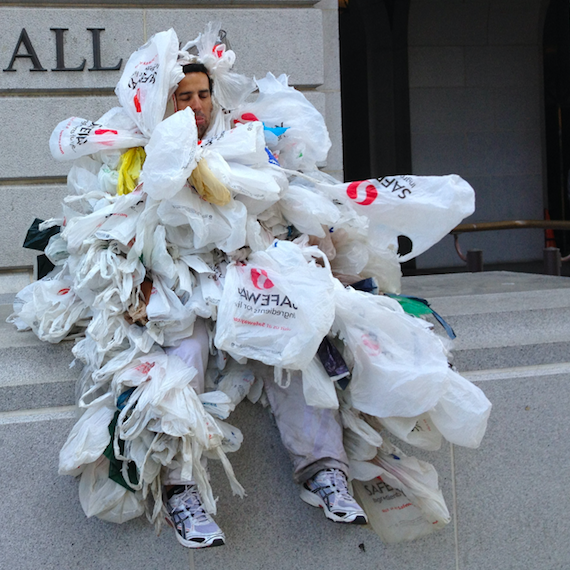
By and large, the vast majority of retailers operating in the U.S. have done little other than complying with local plastic bag ordinances. A surge in local bans, plus investor activism, could spur more companies to take action, however.
There certainly is a lot of talk about weaning ourselves away from plastic. Organizations such as the Ellen MacArthur Foundation have been instrumental in nudging society closer to what is often touted as the circular economy.
Meanwhile, more municipalities in the U.S. are banning plastic bags, while California has had a plastic bag ban (if you wish to call it that – large retail chains must charge for “reusable” plastic bags) on the books since 2016.
But there’s one huge hurdle in moving society away from its dependence on plastic. By and large, the vast majority of retailers operating in the U.S. have done little other than complying with local plastic bag ordinances. While there are plenty of examples of American businesses self-regulating before they become regulated, urgency on plastic consumption has been relatively muted.
Of course, there are exceptions. Ikea has nixed the distribution of plastic bags at its checkout counters for several years. Warehouse store chains like Costco don’t pass them out – instead shoppers have their purchased items stacked into reused cardboard boxes that had once been sitting on shelves. Some apparel and footwear chains, including Adidas and the Disney Store, have stopped giving out plastic bags. Grocers including Trader Joe’s and Whole Foods only use paper bags, and are charging for them when local regulations require it. Looking into the future, Kroger, which owns at least two dozen grocery chains, announced last summer it will eliminate plastic bags by 2025.
“The inability to recycle or safely contain in landfills significant amounts of plastic packaging suggests that society needs to carefully assess the continued growth of plastic use, especially for single use applications,” says the shareholder advocacy group As You Sow.
The Oakland-based organization has rounded up a large group of activist investors to urge companies to do their part to mitigate risks related to plastic pollution, from its role in clogging up landfills to the threats it could impose on both public health and the future of the world’s oceans.
Oddly enough, many of the same companies that say they are aligned with the Sustainable Development Goals (SDGs), and particularly with ocean conservation under SDG 14, are still making it a habit of passing out plastic bags.
That doesn’t sit well with Jan Dell, a contributing writer to GreenBiz. “Free distribution of plastic bags is counterproductive to these commitments and company programs,” she wrote last month. “The retailers are creating plastic bag pollution that is only partially collected in the cleanups.”
In other words, don’t publicize your company’s beach or river cleanup efforts if your organization is also a willing and able part of the current global plastics economy.
With proxy season underway, it will be interesting to gauge whether we will see a surge in shareholder resolutions urging companies to take action on plastic bags and other single-use plastic items. As You Sow is currently curating a list of such proposals. Expect to see even more in the coming years, especially as those 2020, 2025 and 2030 sustainably goals loom even closer.
Image credit: Heal the Bay/Flickr
The CEO as The Chief Executive—A Reality Check
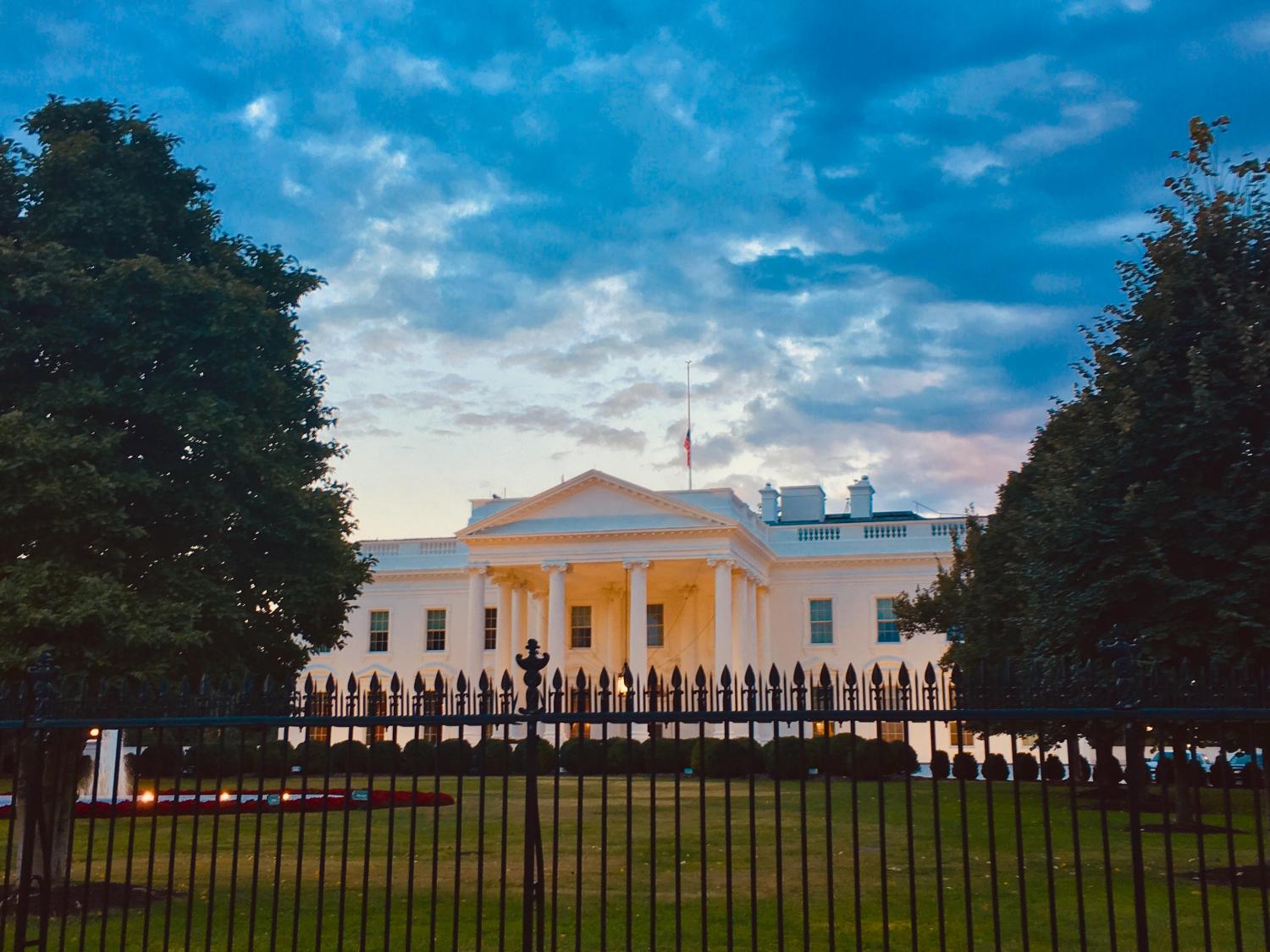
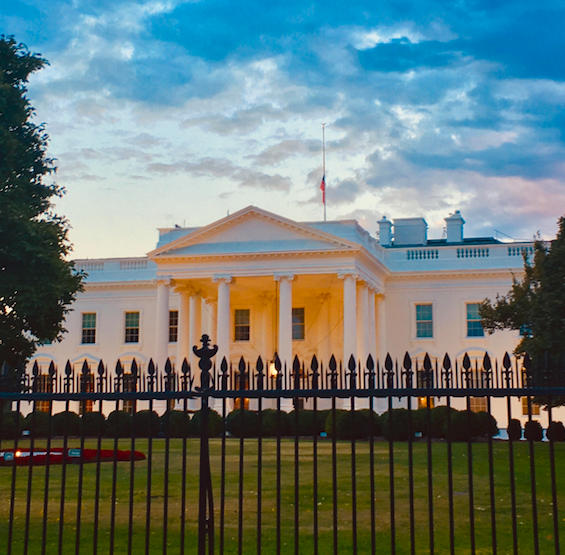
Now, it’s the expectation of consumers, clients, and employees alike that CEOs and, by extension, the companies they lead, will take principled positions on contentious issues. And if that CEO decides to wade into the political arena, plenty of pitfalls loom ahead.
Businesses taking the lead to fill a policy vacuum created by dysfunctional government will be a familiar theme to readers of this weekly series. It’s one of the major trending developments in civic society today, as increasing numbers of business leaders are speaking out on key issues such as immigration, gender equity, gun control, and climate change.
Today, the concept of Brands Taking Stands—led by the CEO as activist—is a common practice. It’s a radical change to a combination of private sector and public policy leadership roles, which was once discouraged. Now, it’s an expectation of consumers, clients, and employees alike that CEOs and, by extension, the companies they lead, will take principled positions on contentious issues.
To pick one of my favorite examples, the PwC sponsored CEO Action for Diversity & Inclusion has recently signed up over 500 chief executives, who have committed their companies to advance D&I in the workplace through the largest CEO-driven initiative to support progress on racial, ethnic, and gender issues.
Now, the action has ratcheted up to another level with a proposed presidential candidacy by a chief executive known for his business acumen and his penchant for taking public positions on key social issues. The idea seems to be that a truly successful businessman or businesswoman with a history of policy positions could be a better federal chief executive than the current occupant of that office.
I’m talking about the announcement by Howard Schultz, founder and former CEO of Starbucks, that he is considering a presidential bid by gauging voter interest while on a promotional book tour. However his effort plays out, Schultz’s proposed bid for the presidency will be a classic case study in the idea of a demonstrably competent CEO putting forth his experience, skills, and corporate vision as a viable option for the highest public office.
As the founder of a 48 year-old multinational with 28,000 stores, 350,000 employees, gross revenue of $22 billion, and an iconic brand identity, Schultz can rightly claim his legacy as a historically significant figure in American business. He can also assert “authenticity” for his long history of taking stands as Starbucks CEO. Schultz has been noted for his positions on immigration (promising to hire 10,000 refugees), racial issues, and gay marriage. Proclaiming values is not a new occupation for this executive, and he touts that authenticity in his latest book, From the Ground Up: A Journey to Reimagine the Promise of America. Intertwined with his personal biography is a “parallel story” that offers a look at Schultz’s “unconventional efforts to challenge old notions about the role of business in society. From health insurance and free college tuition for part-time baristas to controversial initiatives about race and refugees, Schultz and his team tackled societal issues with the same creativity and rigor they applied to changing how the world consumes coffee.”
Back in 2015, Shultz, a strong supporter of Hillary Clinton, sent a memo to her campaign management about her lack of “brand credibility,” complaining that her effort was “too packaged and prescribed. The American people are longing for truth and someone to believe in,” he suggested.
Back then, Schultz added that he is “not a politician” but a citizen who believes the country has a “dire need for authentic leadership.” Apparently, Schultz now believes that he could supply the “authenticity” that will convince voters to propel him to the presidency in 2020.
But in an unanticipated blowback, Schultz, a longtime Democratic supporter, has been roundly criticized for positioning himself as an independent centrist who would draw votes away from a Democratic candidate and therefore help the chances of President Trump winning re-election. He has also received considerable pushback for his skepticism about a “wealth tax” and single-payer health care, common platform points among the currently announced Democratic candidates. The sound bite of a heckler shouting “billionaire” as an epithet has played relentlessly on cable news.
Schultz is reportedly “shocked” by the intense nature of the criticism. A dive into the history of former CEO presidential candidates might have braced him for some of the negative feedback (c.f. Mitt Romney and Carly Fiorina for examples).
How has the company been affected by the negative publicity? Starbucks has been explicit in separating the company from its founder’s proposed candidacy. In a letter to employees, current CEO Kevin Johnson said,
“Starbucks does not get involved in national political campaigns. As we have for 48 years, we respect and celebrate the diverse views of our 350,000 partners working at Starbucks and our millions of customers.”
In the same letter, Johnson re-stated the company’s admirable, ambitious core Mission and Values:
“We believe in the pursuit of doing good:
- We will continue to drive initiatives that promote equality, inclusion and opportunities for our partners.
- We will continue to support bringing people together in service and working to address complex problems in our communities.
- And we will continue to make sustainability a priority as we have for more than 30 years, from ethically and sustainably sourcing coffee to building greener stores.”
Starbucks has nonetheless been the target of political pushback, reports the Associated Press. “Conservatives have slammed the company for matching employees' donations to Planned Parenthood. Liberals are taking aim as well. Neera Tanden, the president of the left-leaning Center for American Progress, tweeted that she will organize a boycott against Starbucks if Schultz runs.”
A final footnote: perhaps the most stinging judgement aimed at Schultz came when he was criticized for proposing to run as an independent and a centrist on the issues by Michael Bloomberg. Though Bloomberg is another billionaire businessman, he has the added credibility of having served as mayor for New York City for three terms.It is widely expected that Bloomberg will put forth his own candidacy for president on the Democratic ticket.
Watch for this mini-trend of CEOs running for the ultimate chief executive position to make the already unpredictable 2020 presidential election even more unprecedented.
Previously posted on the weekly Brands Taking Stands newsletter - be sure to subscribe!
Image credit: Leon Kaye
5 Things CEOs Must Know About Corporate Activism
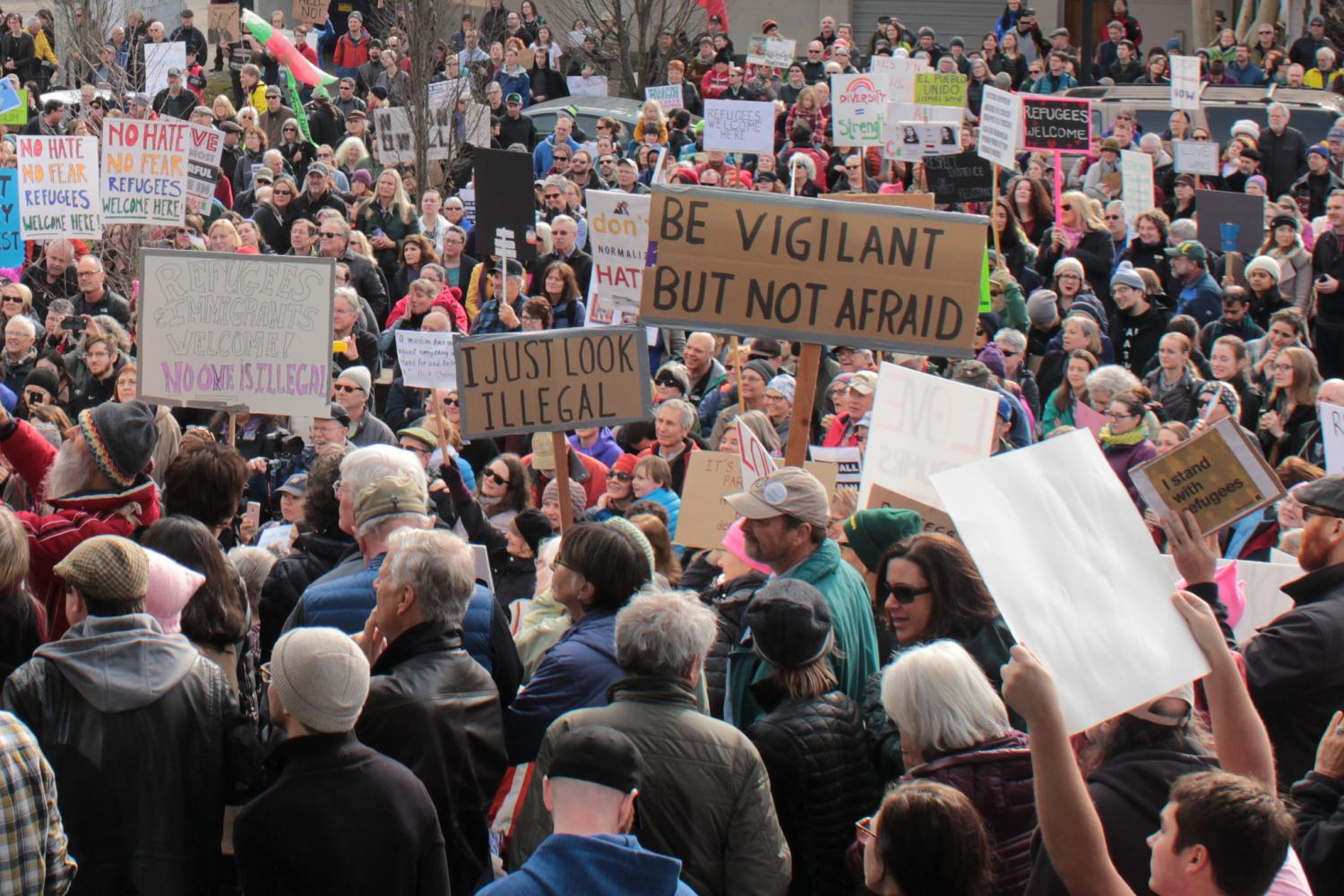
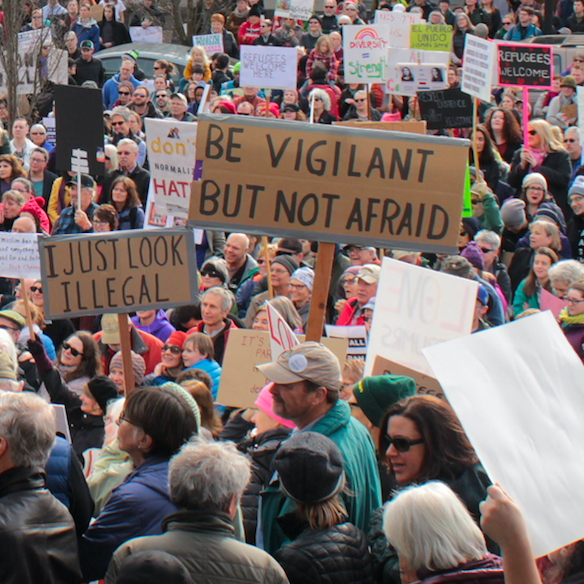
Whether you’re taking a stand on topics such as immigration - in business, as in life, you will win friends and enemies. Here are 5 things CEOs have got to be aware of when venturing into activism.
We have been hearing more and more about brands taking stands and companies plunging into the uncertain waters we call corporate activism. Done right, and your company could strengthen its brand reputation and win the trust of more consumers. Done wrong, and well, a dumpster fire fueled by plenty of social media kindling could mean you’re locked into emergency meetings in the c-suite conference room for a while. Whether you’re taking a stand on immigration, the federal government shutdown roller coaster or transgender rights – just to name a few volatile topics - in business, as in life, you will win friends and enemies.
According to joint study that the public relations firm Weber Shandwick and public opinion research consultancy KRC Research recently completed, there is opportunity in CEO activism to “drive and differentiate corporate reputation.” The caveats, however, are that such a journey is launched after risks are identified and companies may want to ensure that such speaking up and stepping out is done if the topic at hand is linked to the company’s core business.
The bottom line is that business leaders may want to review the following five reminders before jumping on the brands taking stands train.
CEO activism can gain support, but won’t always be seen as favorable
It shouldn’t be a surprise that venturing into social or political activism could polarize your company’s consumers. This survey’s findings read a lot like the latest political poll. For example, 38 percent agree that CEOs have the responsibility to speak out on hotly contested topics. 43 percent believe the opposite, which means there are still the one-fifth who are “undecided,” but could be convinced to side with taking a stand.
And taking a stand could at a minimum engender respect for that CEO: when respondents were asked their opinions about CEOs who took public positions on hot-button social or political issues, the “yeas” were nine points ahead of the “nays.” Woe be unto the CEO who takes a stand on a position that doesn’t have a clear link to his or her company’s business, however; when asked about this hypothetical, the “nays” to corporate activism come out 12 points ahead of the “yeas.”
Activism, if done right, can influence purchase intent
Could taking a stand lead to a boost in sales? It’s a slippery slope; do a quick search of “corporate activism” on Twitter and you’ll see plenty of jaded assessments of how some of the social media glitterati view the brands taking stands movement.
On the other hand, the authors of this report point out examples where taking a stand can pay dividends for companies – especially in this era where consumers distrust many institutions, including, of course, government. They point out to research suggesting Tim Cook’s public statements against “religious freedom” laws may have pushed consumers who are pro same-sex marriage closer to Apple products.
But the sword cuts both ways. Starbucks has faced plenty of challenges (i.e., boycotts) from taking controversial stands, such as with its ill-fated “race together” campaign a few years ago. Target also garnered its share of grief for its transgender bathroom policy. Both Starbucks and Target, however, have a history of clawing back as soon as the financial press reports on yet another period of demise. As TriplePundit’s Tina Casey frequently reports, the success of boycotts is a mixed bag.
Your company’s loyalty will be tested
See above. Starbucks will be in for a ride depending how Howard Schultz’s nascent presidential campaign fares. The report’s authors suggest CEOs should tap into the pulse of a company’s workforce before going out on a limb with an adventure in activism.
Why? The numbers suggest plenty of ambivalence. More than one-fifth of those surveyed for this report said they “don’t know” how they’d feel if their CEO waded into the world of activism – but that number could change quickly once this question no longer was a hypothetical. One-third said it would not make a difference. But by a 26 to 19 percent ratio, more employees said they would feel more loyal as opposed to becoming less supportive.
Many Americans are still leery about the motivations behind CEO activism
Here is where CEOs really need to consider whether this venture into activism is worth the potential blowback. Any CEO who fancies himself or herself of the next Marc Benioff or Larry Fink must remember that this report suggests the U.S. public is, at a minimum, guarded about taking a stand. When asked the reasons why a CEO would take a position on any hotly contested issue, 36 percent said it was a ploy to get media attention. Building the CEO’s reputation and selling more goods and services also ranked high on this list.
And what assessments tied with those next two reasons given? Respondents then said to be “open and honest” about alignment with company values, as well as their personal feelings, both scored mentions.
The lesson here? To start, authenticity matters.
There’s a good chance you’ll win over the millennials
In what should be no surprise, millennials appear to have the most open mind toward corporate activism, at least according to this report. And when it comes to the workplace, millennials are most enthusiastic about this idea – much more so than the Gen X’ers and even more so than the baby boomers. And whether millennials agree with a CEO or not on a social issue, that business leader has at least earned this generation’s respect. “Perhaps Millennials, who grew up with and are intrinsically connected to social media, are used to wearing their opinions on their sleeves (or online) and are more comfortable with leaders who do the same,” concluded this report’s authors.
We talk about these trends weekly in the Brands Taking Stands newsletter. Be sure to subscribe!
Image credit: David Geitgey Sierralupe/Flickr
Stocking Up, Moving Out, Speaking Up: Brexit’s Impact


With the clock ticking closer toward the United Kingdom’s scheduled departure from the European Union on March 29, the collective freak-out is roaring louder.
With the clock ticking closer toward the United Kingdom’s scheduled departure from the European Union on March 29, the collective freak-out is roaring louder. Many businesses have long been vocal over the U.K. government’s clumsy attempt to find its way to a “soft” (i.e., negotiated) rather than “hard” (no-deal) Brexit, the latter of which has festered all sorts of scenarios – none of them ideal.
“The government is probably not ready to prevent the economic impact of a no-deal,” Danielle Haralambous, U.K. analyst at the Economist Intelligence Unit (EIU), told CNBC last month in one of the more understated assessments about Brexit.
The business community’s skittishness over what could occur in the event of a hard Brexit is summed up by the actions of Dyson, the British technology company that manufactures a bevy of products including vacuum cleaners, blade-less fans, hair dryers and perhaps in the future, electric cars. Its founder, James Dyson, has been described as a hard-core supporter of Brexit, but his namesake company is moving its headquarters from the U.K. to Singapore. The company claims the move is due to the fact more of its customers and manufacturing are in Asia; nevertheless, the optics couldn’t be worse.
More business and nonprofit leaders is coping with the uncertainty over Brexit with one, or more, of these three tactics: speaking up, stocking up or moving out.
Speaking out
When it comes to all matters related sustainability, plenty of doubts remain about the U.K.’s post-Brexit future. One of them involves the circular economy. Like many countries, the U.K. already has its own waste management struggles with China’s ban on waste imports. “Substantial investment in new recycling infrastructure is likely to be required,” says one observer, a tall order considering the island nation is already struggling with recycling targets. The situation could be dire, considering reports suggesting the U.K. government risks grappling with “putrefying stockpiles” of waste in the event export licenses to send garbage to the European continent expire at the end of March.
And while we’re on the subject of ditching agreements, there’s another EU commitment that could fall by the wayside with disastrous results: the drive to end overfishing by next year. Although the U.K.’s government has promised to fold in all EU environmental measures into the country’s domestic laws, Greenpeace alleges a fisheries bill making its way through the House of Commons could actually lead to more overfishing.
Some companies will temporarily shut down as they assume a hard Brexit will disrupt their supply chains. Jaguar Land Rover recently announced their U.K. factories will tack on another week of a production “stand down,” stretching that period to mid-April.
Stocking up
The good news – there could be a short-term economic stimulus as the Brexit deadline nears, as the evidence suggests both consumers and businesses are stockpiling supplies as one way to dodge the effects of sudden changes in customs regulations. For example, Unilever, which owns the popular ice cream brands Magnum and Ben & Jerry’s, has admitted that the company is building up extra supplies of ice cream that will last several weeks. Unilever is also shoring up supplies of several brands of deodorant in the event tariffs kick in. But any such stockpiling is akin to a sugar high: it will wear off fast and the lingering effects could get ugly.
Doubts over Brexit are wreaking havoc with supply chains across all sectors. The fast food chains McDonald’s, KFC and Pret a Manger last month joined dozens of retailers in warning the U.K. government that tariffs could ruin farmers. These companies also say that stockpiling supplies is no longer an option, as they have maxed out all possible frozen and refrigerated storage options.
Furthermore, the rush to stock up on supplies could threaten public health, as in reports of consumers snapping up medical supplies over fears of potential shortages. Some consumer behavior borders on the extreme, with one example being the 48% Preppers for Families page on Facebook, which shares advice for coping in a post-Brexit world that ranges from food storage tactics to identifying wild edible plants. Nevertheless, consumers have plenty of reasons to be concerned about their post-Brexit reality, with one reason being that prices for generic drugs continue to increase.
Don’t expect the U.K.’s Premier League to be stockpiling on players, however. The league’s world-class soccer clubs, including Manchester United, Chelsea and Arsenal could find it hard to attract top talent as the pound keeps losing value against other global currencies.
Moving out
The numbers are grim: a recent survey suggested that as many as one-third of all businesses based in the U.K. are considering some type of a move abroad, from shifting some staff to a complete relocation.
The U.K. market analytics research firm GlobalData concluded earlier this month that many tech companies are ready to join the Brexit “exodus” and relocate elsewhere in the EU – Ireland alone reportedly claimed 55 such Brexit-related investments that generated 4,500 jobs last year.
Other companies may not be moving personnel, but are moving their international or headquarters out of the U.K. Sony, for example, announced its European headquarters is moving to Amsterdam.
One U.K. company that dates back to the 1837 isn’t moving its headquarters but is ditching the Union Jack. P&O, which operates six ferries that cross the English Channel, plans to replace the U.S. flag with the Cypriot flag in order to salvage its EU tax benefits.
Image credit: Giuseppe Milo/Flickr
Progress Continues Worldwide in Transition to EVs
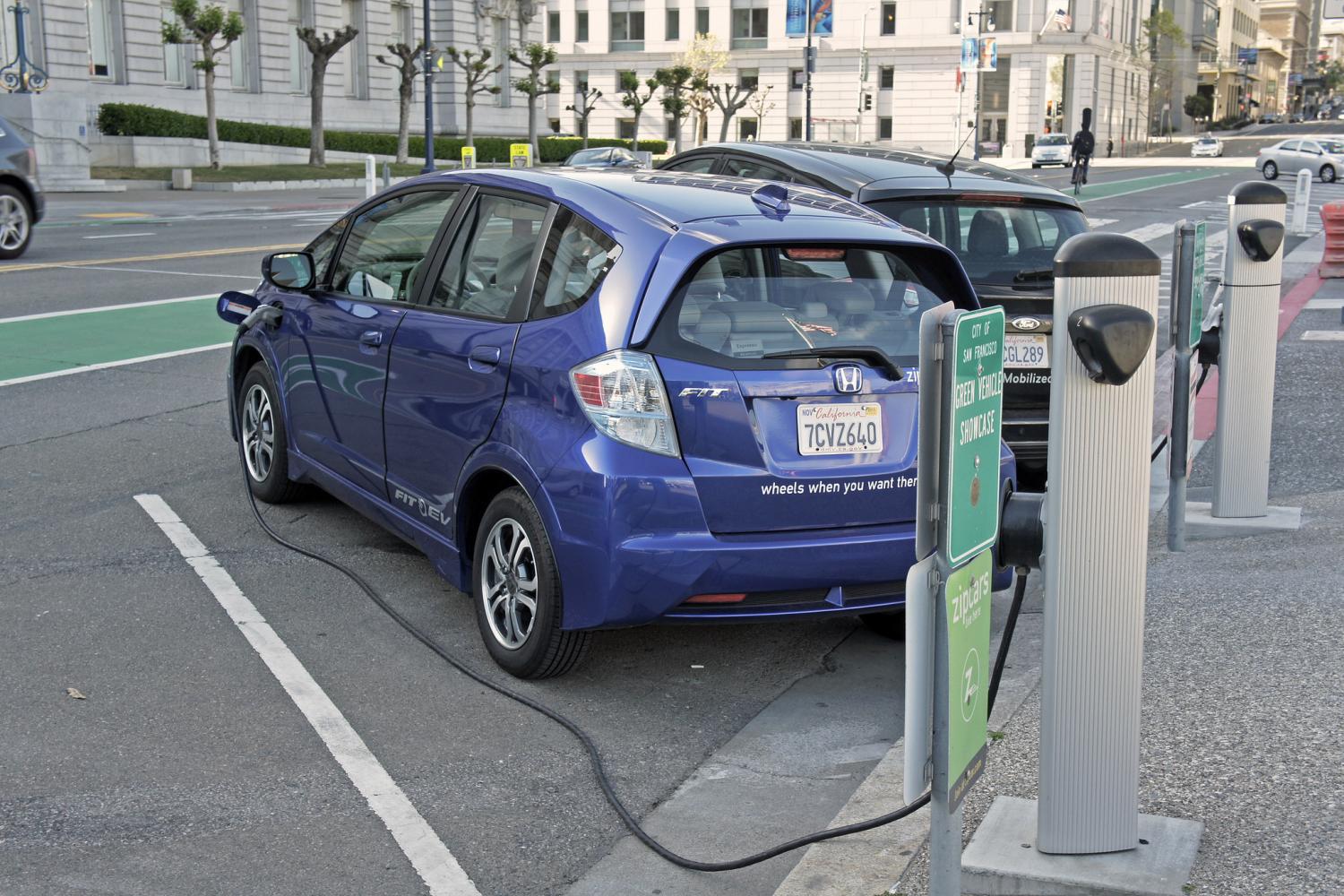
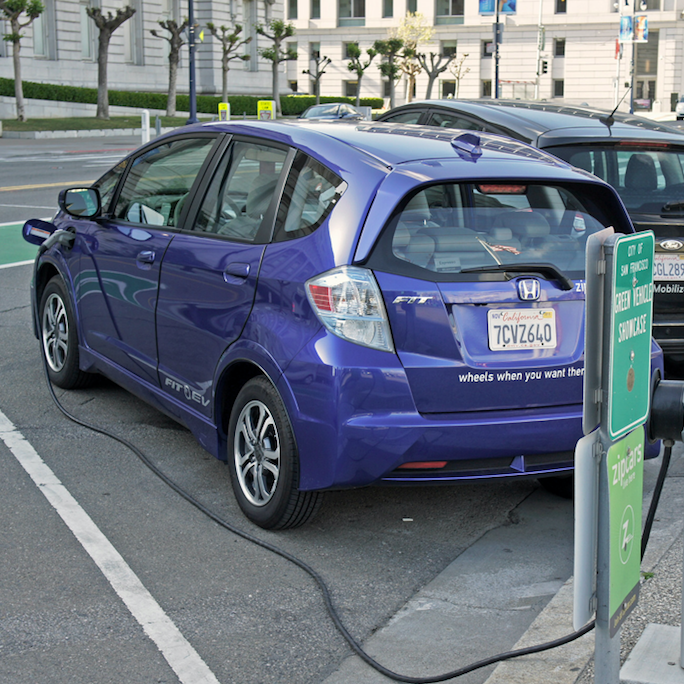
A new report suggests that the integration of electric vehicles into global corporate fleets and procurement policies is scaling up at a rapid pace.
Time and again, we see businesses playing leading roles in the move to a more sustainable economy. Whether it's to compensate for governmental inaction (particularly here in the U.S.) or responding to consumer and shareholder demands in an increasingly transparent society, or just because they really care, the trend is clear.
First there was RE100, where companies committed to obtaining 100 percent of their power from renewable sources. Then came EV100, which is similarly committed to encouraging companies to accelerate their transition to electric vehicles (EVs). Both of these are initiatives of The Climate Group. Clearly, the combination of the two, an electric vehicle fleet powered entirely by renewable electricity could be among the best possible outcomes.
Are these efforts showing results? According to RE100, this initiative now has 162 companies that have pledged to move towards fully renewable energy supply for all of their operations. Given that fully two-thirds of the world's electricity is consumed by industrial and commercial users, this is a highly significant development.
As for EV100, a new report entitled, "Business Driving Demand for Electric Vehicles," just came out, looking at progress towards its goal of "a rapid transition to an electrified global vehicle fleet."
The following are some highlights from that report:
- At the end of the first year (September 2018), the 23 member companies, with a combined annual revenue of $477 billion, committed to purchasing 145,000 electric vehicles by 2030.
- Those purchases together will represent 7.3 million US tons of CO2 saved.
- To date, 10,000 vehicles have been switched.
- A combined 632,000 employees will have access to charging infrastructure.
- Since the report, an additional 31 companies have joined adding 70,000 more EV commitments.
- In addition, LeasePlan has committed to electrifying its entire fleet of 1.8 million vehicles, bringing the total commitment to over 2 million.
The commitments that these companies are making consist of one or more of the following:
- EV integration into directly controlled (owned/leased) fleets.
- EVs in service contracts (e.g. daily rental, contracted taxi providers, car sharing).
- Supporting EV uptake by staff (charging infrastructure, incentive programs).
- Supporting EV uptake by customers (charging infrastructure, customer engagement).
Specifically, in the case of directly controlled fleets, 100 percent of vehicles weighing up to 7,000 pounds must be converted to EV, while at least half of the larger (7,000-15,000 pound) vehicles must be electric. Logistics companies must commit to fully utilize electric vehicles for the last delivery mile.
Geographic distribution of members is presently concentrated in Europe, which dominates in terms of committed vehicles and charging sites. However, looking at individual countries and their vehicle commitments, the U.S. is third with 8,740, behind Germany with 52,786 and France with 28,763.
Why do companies say they are making the move at this point? While financial savings potential is the least-cited reason among the top five, with only around 20 percent calling it "very significant" compared to 79 percent saying the same thing about reducing greenhouse gas emissions, Ingka Group (formerly IKEA) says that making no changes to its fleet would be more expensive than making the transition to electric. They are moving to EVs because it "future-proofs its operations and lowers business risk from air quality legislation and zero emission zones, which are increasingly restricting access to city centers for polluting vehicles." If they can’t deliver their products, they can’t sell them.
How do these companies plan to meet their commitments? Ingka plans to achieve its goal with a combination of electric delivery trucks and electric cargo bikes. PG&E is pioneering the use of hybrid-electric bucket trucks and the Chinese tech company Baidu is starting to rollout self-driving electric buses. Other companies, such as Metro AG and Unilever, are looking at their travel service providers such as taxis and car rental companies, building these specifications into their corporate travel policy.
The companies with the largest vehicle commitments to date are DHL (66,390), Électricité de France (EDF) (31,303) and Unilever (13,336).
But among companies, LeasePlan stands alone. It has pledged to not only transition its own employee fleet to all-electric by 2021, but by also targeting net zero emissions from its entire 1.8 million vehicle customer fleet by 2030. As a leasing company, it wants to provide the cars people want to drive. Plus, LeasePlan is responding to the actions that companies like Metro AG and Unilever are taking today, so that they can respond to the anticipated requests that will be expected. Says CEO Tex Gunning, "think big, start small and go electric." They foresee a 40-60 percent growth rate for EVs in the coming years.
The market is shifting. VW has already exiting the combustion vehicle market. The report's authors expect others to follow with a complete shift by 2030.
Image credit: MarioRdo59/Flickr
Millennials & Money: Insights from an Often Overlooked Community


Many millennials are left out and marginalized from our financial systems, for many reasons including the financial crisis of a decade ago. But rapid technological and social change is offering new opportunities for social inclusion.
Millennials are receiving quite the attention from the media. We are often characterized as lazy and entitled. What I find to be true is that our generation has little trust in large institutions — from governmental offices to our large banks and financial institutions. We are steeped in our values and want our money aligned with our desires for a more sustainable planet. We are poised to catalyze big shifts in how financial services operate. What has yet to be adequately covered are the ways many millennials are left out and marginalized from our financial systems.
Making Do
Growing up in a low-income immigrant community in Los Angeles, I witnessed and experienced first-hand this lack of financial access. In my community, most people did not have access to checking accounts or relationships with banks. They lived paycheck-to-paycheck, not earning enough to maintain an account free of monthly fees. For some, legal status required living in the shadows and that influenced their interactions with money as well.
Without access to financial services, raising families in the informal economy is an uphill battle. Most of the women in my community stay home to care for their children and find ways to make extra money by engaging in entrepreneurial activities such as selling food and clothing, cutting hair, cleaning houses, providing childcare and much more.
Without banking or credit cards, these communities have no credit scores and therefore struggle with basic needs such as renting a home or buying a car. Out of necessity, many operate in cash or trade, while some fall victim to predatory payday lenders. Despite being excluded from the formal economy, many in my community have extensive experience with savings and loans through their lending circles. Family, friends, and neighbors lent and borrowed money in small groups called “tandas,” with each person contributing a set amount each month and one person from the group taking the pot each month. This informal “line of credit” came in handy many times. I recall what a relief it was when a family member was able to use the tanda to help with the unexpected expense of repairing his car.
Eyes Toward the Future
In 2004, I was one of the fortunate few in my community to earn a scholarship to attend college. There I met other millennials who experienced money very differently. A classmate told me her parents opened a brokerage account for her when she was 16 and her money had been growing ever since. I had heard of a brokerage account in my economics course, but it was not a tangible concept for me, as having extra money to put into such an account was completely foreign. Other students referred to each other as “trust fund babies,” — another concept difficult to relate to. Despite the vast differences in our financial backgrounds, the promise of a top-notch education offered me the comfort that someday I would be able to earn enough money to enter the formal economy, open a savings account, start investing and saving for my future.
As a senior in college, I was ready to take on the world — and then the financial crisis hit. I graduated alongside 1.4 million millennials, who had taken on more student debt than ever before, amid the largest financial meltdown since the 1930s. We graduated to an environment with dramatically low wages, high unemployment, and a changing political landscape. The economic conditions made it incredibly difficult for millennials to find stable jobs, and as a result many of us went back to school, accruing even more debt.
I wanted to be a public servant — to engage in and work toward solutions for the income inequality that I knew was a big issue for our nation. With that in mind, I pursued a Master’s in Public Administration. During graduate school, I encountered the concept of Social Impact Bonds. I was excited to learn that private companies and public entities could form partnerships to lower recidivism in New York jails. Intrigued, I did more research. I learned about impact investing and was won over by the possibilities of shifting capital for good. In 2014, I read of a company turning guns into luxury jewelry, an endeavor that took weapons off the streets and helped fund gun-control advocacy. Still reeling from the Sandy Hook Elementary shooting, I could see that impact investing was a force for positive change and I had to be part of it.
Working to Shift Capital
Today, I have the privilege to work for a company that believes in, and works for, equity, diversity, inclusion, women’s empowerment, and social justice. We at Nia Impact Capital understand that for everyone to thrive, we must include everyone. This means having equal representation in leadership, empowering women with financial education, removing the stigma around lack of financial literacy, and making financial products accessible to those who have been traditionally excluded.
At Nia, we are activist investors, engaging our portfolio companies and other asset managers to move the needle on social change issues.
My background has influenced the work I do and the issues I care about, and my work has influenced my personal relationship with money.
I am clear I do not want my money sitting in the big banks causing crisis. Growing up amongst women without access to capital, I want my savings account to work for them, so I invest with CNote. I also provide loans to women through Kiva. Having benefited personally from non-profit organizations that help low-income communities, I value charitable giving and give annually to organizations improving college access to underrepresented students.
One of the most meaningful actions I have taken is gifting my parents an Individual Retirement Account. When I discussed opening an IRA with my stepfather, he was nervous because he was unfamiliar with the concept, but as I explained the benefits, he became excited about having savings for retirement. My parents have since been contributing to their IRA in small amounts and I try to match their contributions annually.
When I think of my parents or the many entrepreneurial women in my community, I see unlocked economic potential from a population more than willing to contribute to financial growth. For many millennials whose families and communities have been systematically excluded from the financial system, the cycle of exclusion will continue until we begin to focus on the benefits of bringing these communities into the formal economy.
I cannot speak for all millennials, though, from my view, millennials have similar goals to other generations. We want financial security, we want to contribute to the economy, and have the freedom to choose a job that brings us purpose and joy. This clarity around our values is often mistaken for entitlement, and yet millennials are uniquely positioned to help solve for some of the world’s most difficult challenges. We grew up in era of major technological transition and political change, and we have lived through the Great Recession of 2008. All these experiences have helped–if not forced us–to identify and assess our values. While we have varying backgrounds and paths on our money journey, as millennials we share a desire for a sustainable world. Our collective economic power is already shaping the way we invest our dollars and as that economic power grows, we must remember that the sustainable future we seek must also be inclusive.
Originally posted on Green Money Journal.
Image credit: Pixabay
More U.S. Pedestrians Are Getting Killed by Cars - Can Tech Help?


The number of pedestrians killed by cars in the U.S. has surged over the past decade, but better urban planning, along with rapid technological innovation, could offer hope.
In 2011, Raquel Nelson and her four-year-old son, AJ, were crossing a busy intersection when a drunk driver struck and killed AJ. The driver admitted to drinking and taking painkillers on top of being blind in one eye. He pleaded guilty to the hit-and-run, but he wasn’t the only one charged – Ms. Nelson was also charged with second-degree vehicular homicide for crossing without a crosswalk. The ridiculousness of the charges drew nationwide scrutiny and were eventually reduced from a 3-year sentence to a $200 fine.
This case brings up the issue of inadequate pedestrian-friendly infrastructure in U.S. communities, especially in ones where high percentages of people of color live. In the case of AJ, the nearest crosswalk was over a half mile away while the Nelson family’s apartment was directly across the street from the bus stop. The residents of the surrounding neighborhood, Austell, in metro Atlanta, are 60 percent black and many do not have regular access to a car. These citizens need infrastructure improvements in their communities the most, yet historically, they have been largely neglected in urban development budgets. Money streams into maintaining higher-income white neighborhoods with little directed to developing poorer communities with crumbling sidewalks and dangerous intersections.
This situation is exacerbated by the growing distance between workplaces and poor minority neighborhoods. The number of jobs near a typical Hispanic or black resident in major American cities has dropped at over double the rate of those near white residents. This is the same case for poor residents (17 percent decrease) versus non-poor residents (6 percent decrease).
These urban planning statistics contribute to the increasing number of people killed by cars; between 2008 and 2017 the number of people killed by cars increased 35 percent over the previous decade. This problem is not unique to the U.S., but the extent to which cars are ingrained in American culture has led to ignorance on the issue. The prevalence of cars in America contributes to pollution, sedentary lifestyles, and far too many cases like what happened to AJ and Raquel Nelson. Creating a safer environment that values human life and wellness over mobility requires a cultural shift and vast infrastructure improvements.
Beyond improving pedestrian access to public spaces, infrastructure developments have been shown to reduce air pollution, increase economic activity, and strengthen social cohesion. This has been the case in Barcelona, Spain, after neighborhoods citywide were redesigned into pedestrian-friendly “superblocks”. A form of this "smart cities" idea has taken hold in Seattle, where a central neighborhood is being redone into a Dutch-style “woonerf”, or park-like pedestrian walkway. The city council has voted to waive permit fees for developers who commit to remaking streets into woonerfs.
Could the private sector help out by leveraging technology for good - in this case, pedestrian safety? One example, among several worth noting, is underway in the Pacific Northwest.
Portland, Oregon has recently approved of a project that uses technology to identify and solve these issues in the city. Its pilot program, Smart City PDX, involves placing sensors in some of the city’s most dangerous intersections. These sensors were created by General Electric’s startup, Current, which collects data into its Internet of Things platform to better understand how we travel. This data will also be used by the Portland Urban Data Lake pilot to identify areas most in need of public works improvements.
Leveraging technology to solve urban inequalities is a promising opportunity for American cities that have been structured around cars. Implementing similar initiatives across the country will be expensive and arduous, but essential for future economic growth.
Image credit: Thomas Hawk/Flickr
Ceres Helps Companies Change the Conversation with Investors
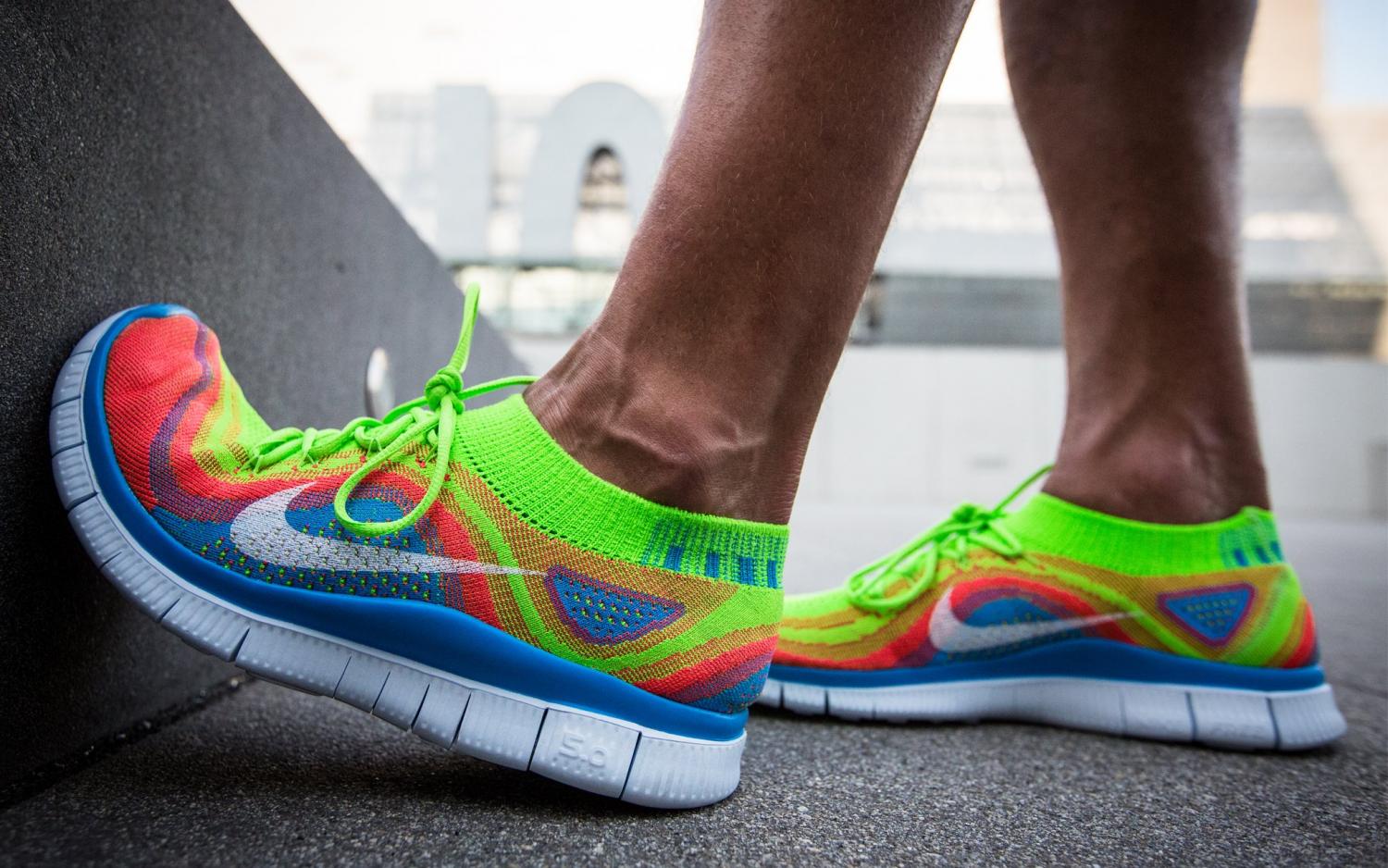
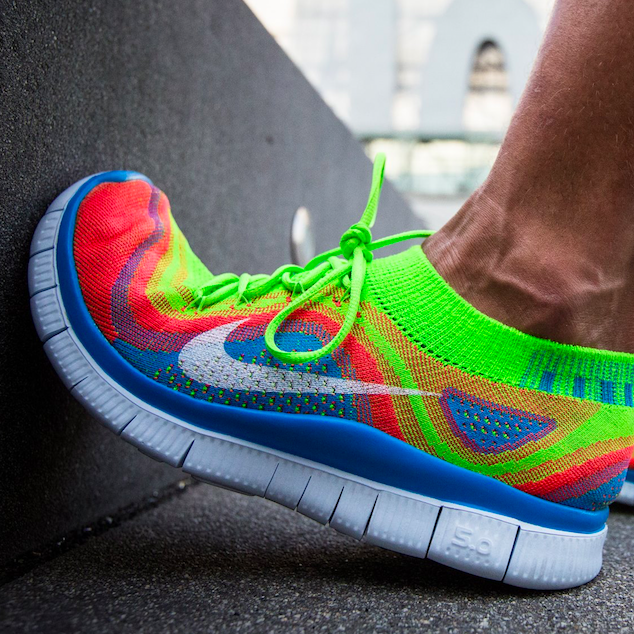
Are companies effectively communicating with investors? A new report from Ceres argues overall, companies are not - though there are some successes, such as Nike.
Capital markets are clamoring for more information about climate change and other environmental, social and governance (ESG) risks, as the recent World Economic Forum in Davos made clear. Investors are screening for ESG risks as never before, as TriplePundit has reported, with investments guided by ESG criteria rising to $12 trillion in the US alone.
But are companies effectively communicating with investors? A report launched today by sustainability nonprofit Ceres argues that companies are not.
When it comes to engaging investors on sustainability, the vast majority of companies are still missing the mark, according to the report. With rare exceptions, they fail to present sustainability as an integral component of business strategy and decision-making, or as a driver of increased business resilience and revenue growth.
In “Change the Conversation: Redefining how Companies Engage Investors on Sustainability,” Ceres drew on interviews with more than 25 Ceres investor partners to develop key recommendations to help companies communicate sustainability as an integral component of decision making and a driver of business value.
Incentivizing companies
“When companies sit at the table with investors or present at their AGM [annual general meeting], and sustainability comes up, they are reinforcing the misconception that sustainability is extra-financial and not material, when in fact sustainability improves the resilience of the company and the bottom line,” Kristen Lang, a Ceres Company Network Director and author of the report, told TriplePundit.
“By changing the conversation, it will create an environment where companies can be rewarded for their commitments and incentivized to continue to scale their ambition and urgently respond to issues like climate change, water scarcity and human rights abuses,” Lang said.
The report noted that for many companies, engagement with investors on ESG issues “is fraught with trepidation and resistance. This leads to reactive, less-effective interactions with interested investors.”
Getting the right information in the right place
Lang said that without deeper insight on what ESG information investors value, how investors want to see this information and who they want to hear from, companies will “continue to fall short in providing the decision-useful information investors need to fully understand and value the financial implications of critical sustainability risks and opportunities. “
“For most companies,”, she explained, “their first point of contact on ESG issues, or perhaps their only point, is third-party research providers. There is a big reliance on these providers, which means that the information is isolated to the ESG teams in house who can answer the questions. There is not a lot of collaboration between sustainability teams and investor relations [IR] teams. So if IR teams or the C-suite is not getting the questions directly, there can be apprehension or confusion around what investors really want.”
The recommendations Ceres sets out to tackle this problem are contained within three strategies: 1) Integrate sustainability into business systems and decision-making, 2) Identify what to disclose and where to disclose it, and 3) Implement a proactive investor engagement strategy.
It starts with internal buy-in
These three elements are dependent on one another, Lang argues. Without internal buy-in at the highest levels for sustainability and a strong sense of how to communicate this internally, companies will not succeed in communicating their commitment externally, especially in language investors understand and value.
“If there is not a common understanding of these priorities it will be harder for companies to get the message out there,” Lang told TriplePundit.
Disclosure of sustainability activities and risks most often occurs in sustainability reports. Investors interviewed by Ceres said they use these sources because that is where they expect to get the most complete information, not because that is necessarily where they want to see it.
They’d rather see ESG information in proxy statements, 10-Ks and annual reports: information that all investors reference.
Missed opportunities
The biggest missed opportunity identified by investors and analysts, according to the report, is the failure of companies to showcase customized, streamlined sustainability disclosures in the IR pages of their websites.
“If they can’t find it, they can’t use it,” Lang said. “Companies are making it hard for investors to get the information they need.”
The third strategy, proactive engagement with investors, is among the most important, Lang argued. “This needs to happen more explicitly, to shift from a reactive approach when a crisis occurs to really articulate their sustainability strategy and how those actions mitigate risk, improve resilience, and drive business growth and revenue.”
According to Lang, investors are pushing for more clarity from companies on ESG information because they recognize that sustainability is core to business value creation.
Companies getting it right
Studies from wide-ranging sources, including Oxford University, Harvard Business School, Morgan Stanley and Bank of America Merrill Lynch, the Ceres report noted, all affirm that a focus on a sustainable business strategy can provide a competitive advantage in stock price, cost of capital and operational performance.
“What came up often in our interviews with investors was the level of missed opportunities that they were seeing,” Lang told TriplePundit. “I think the recommendations will provide companies with the guidance they need to meet investors’ expectations. I hope they use this report as a conversation starter.”
The report includes several case studies of companies who are engaging investors successfully. At its 2017 Investor Day, for example, Nike informed shareholders of the company’s expectations that 50 percent of its growth in the next five years would be driven by innovation. And in a 2018 video on its IR website, Nike’s CFO Andy Campion explains how sustainable innovation is a core part of that strategy. The company’s FlyKnit technology, Campion noted in the video, has generated over $1 billion, and is quickly approaching $2 billion in revenue growth for the company.
The technology precisely engineers every stitch of a shoe upper to deliver maximum performance for athletes and produces 60% less waste than traditional cut-and-sew methods. Since 2012, the technology has reduced nearly 3.5 million pounds of waste.
That, said Lang, is the kind of information, especially coming from a CFO, that will make investors sit up and take notice.
Image credit: Nike/Facebook